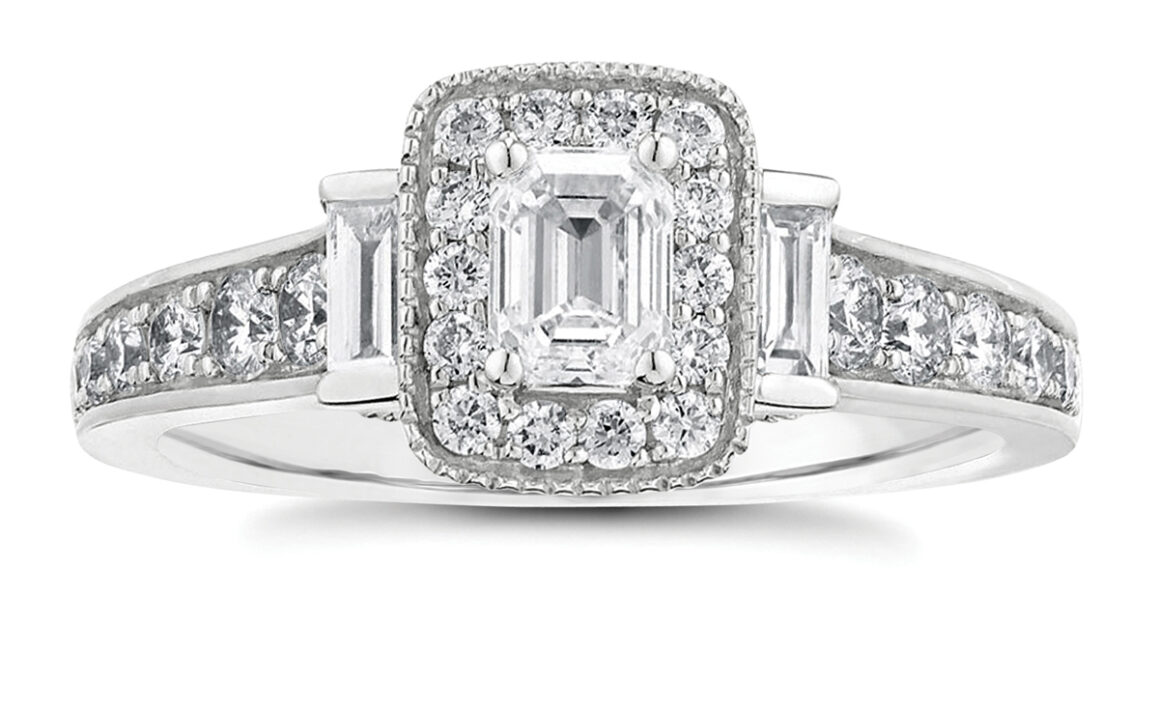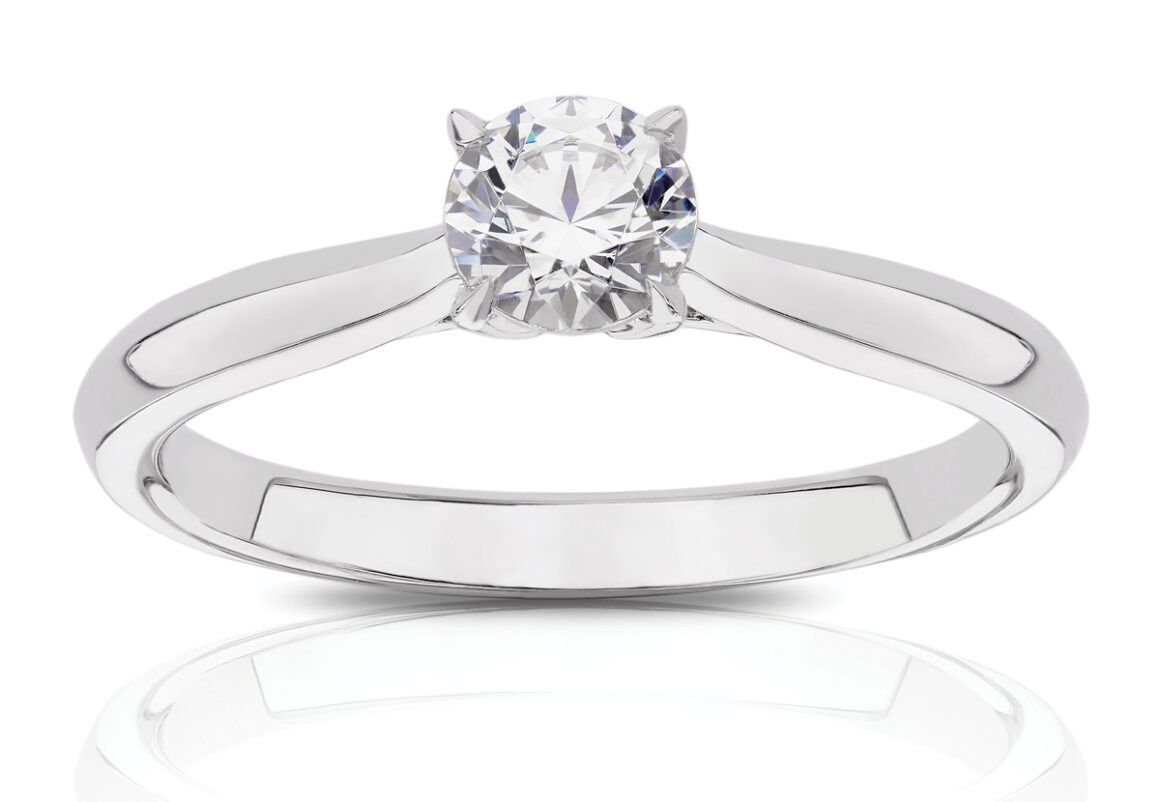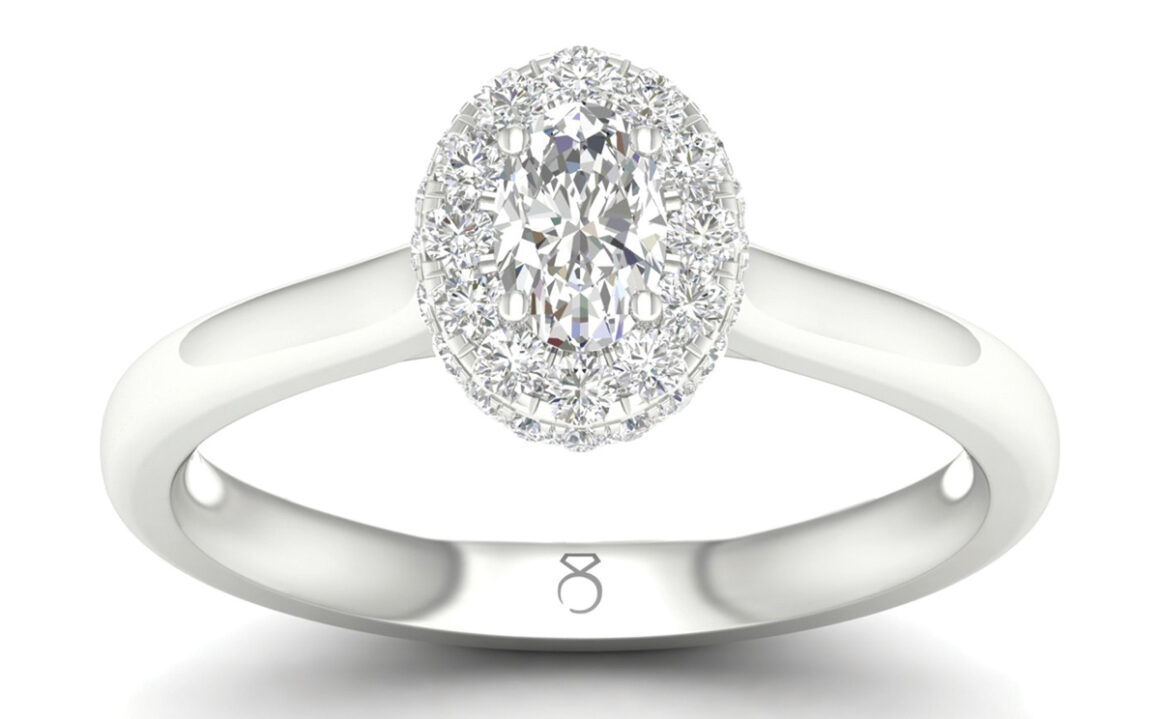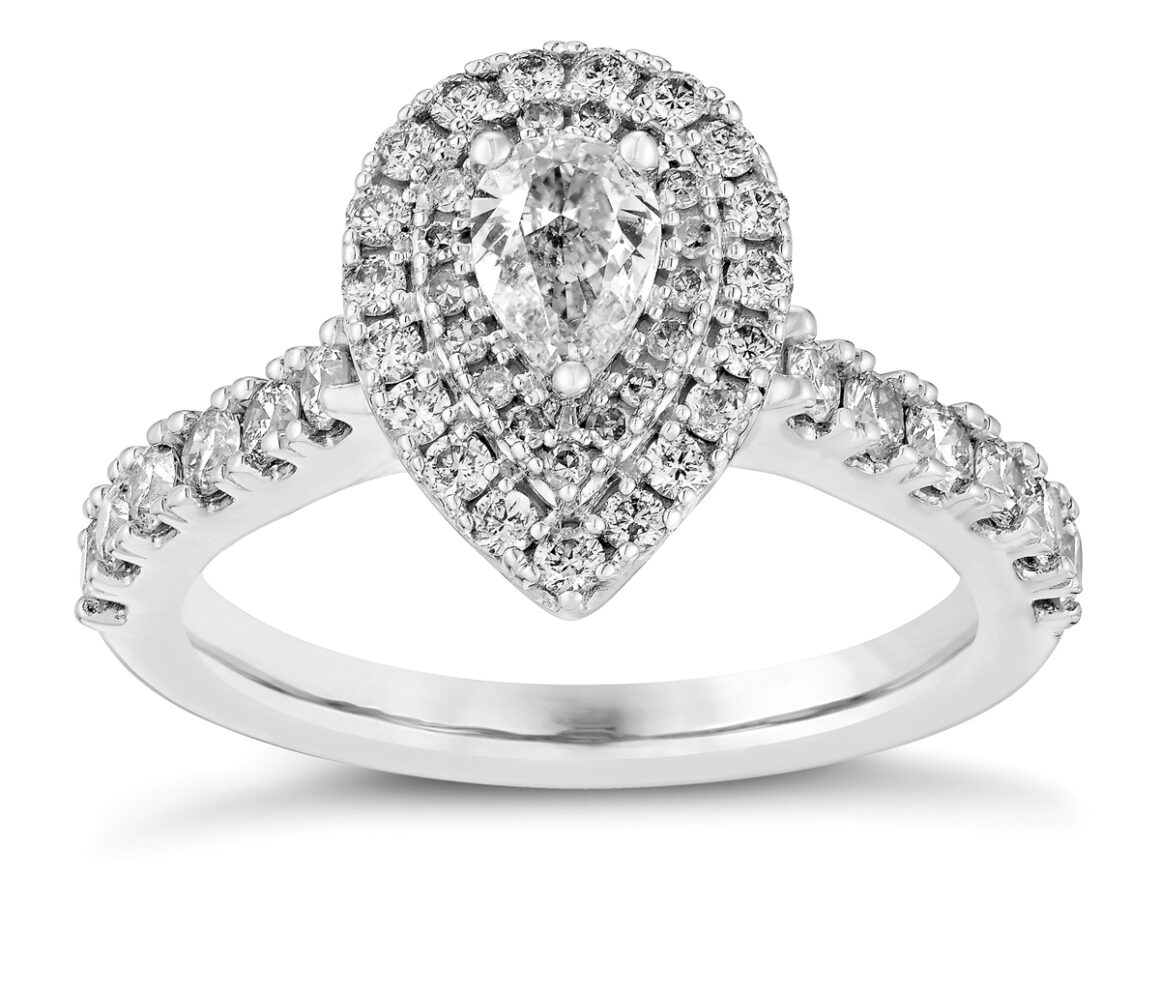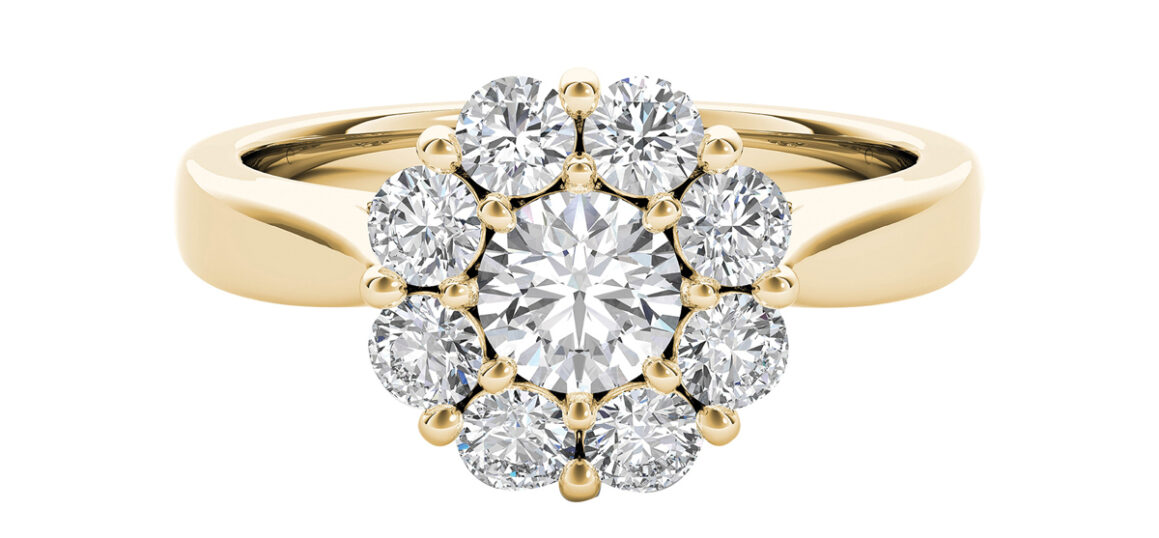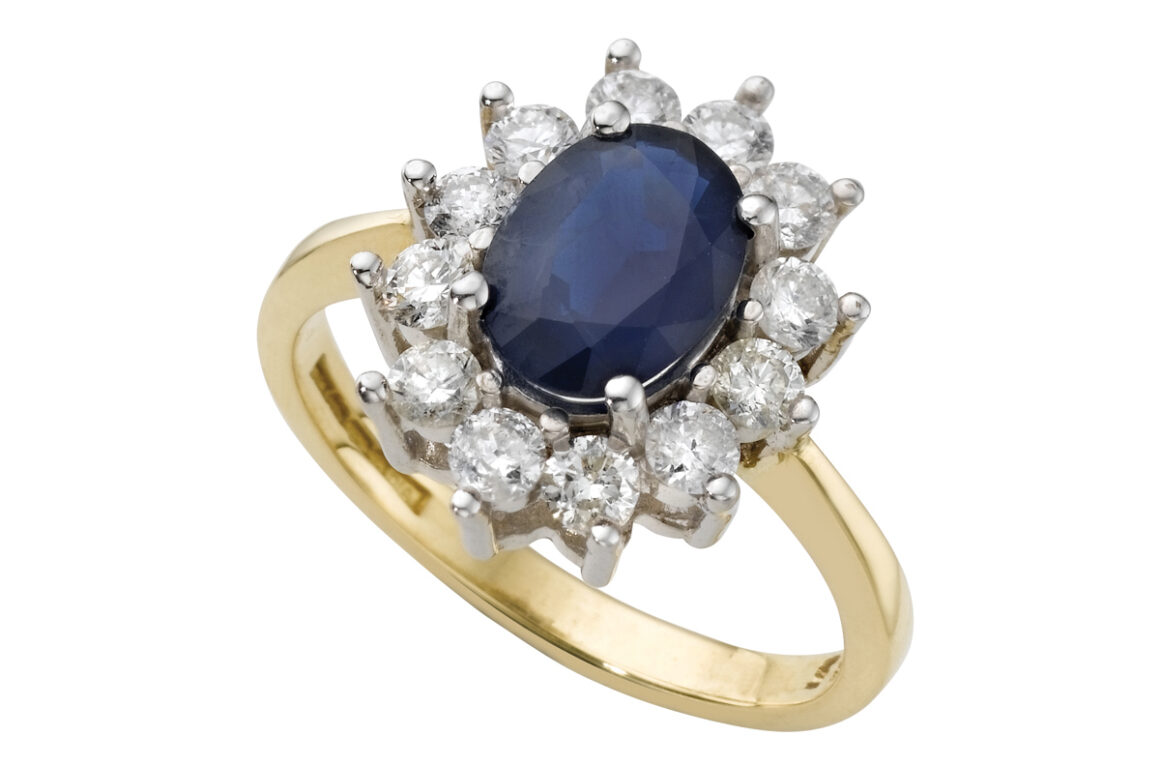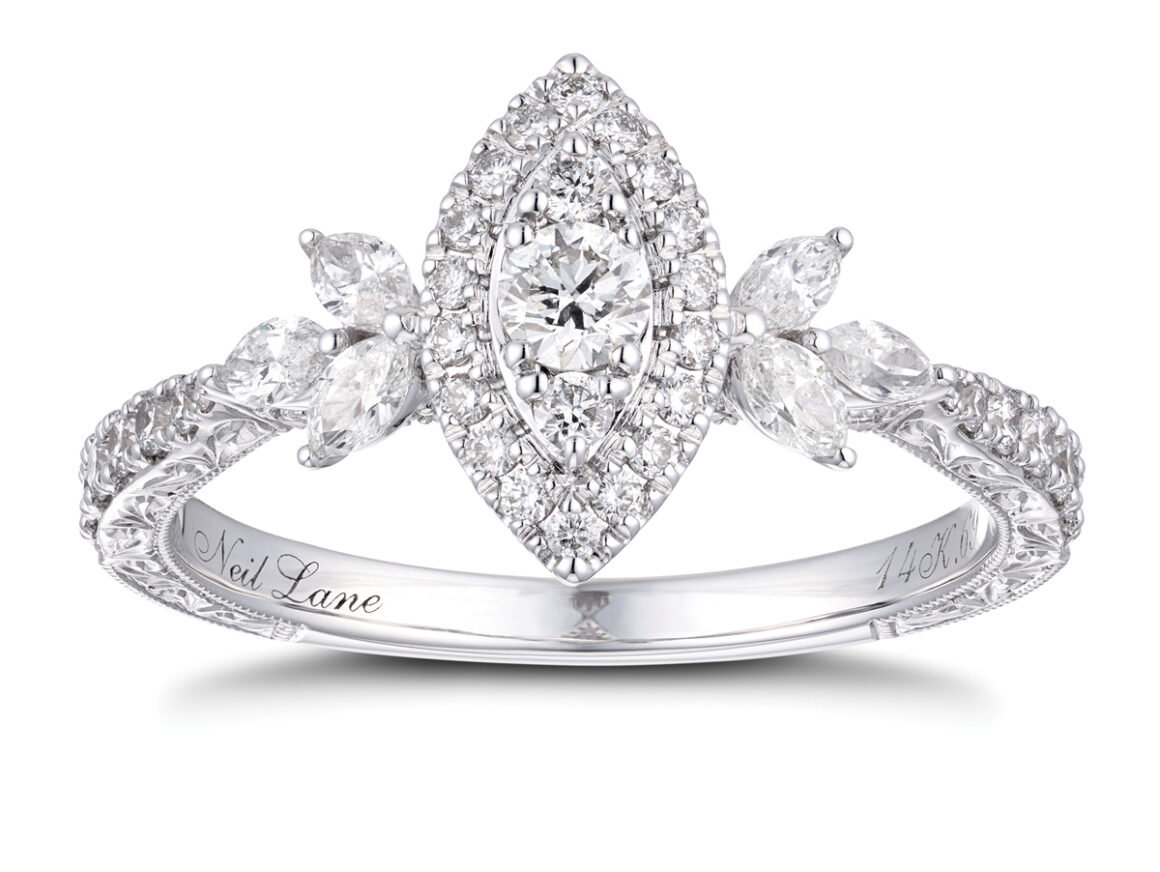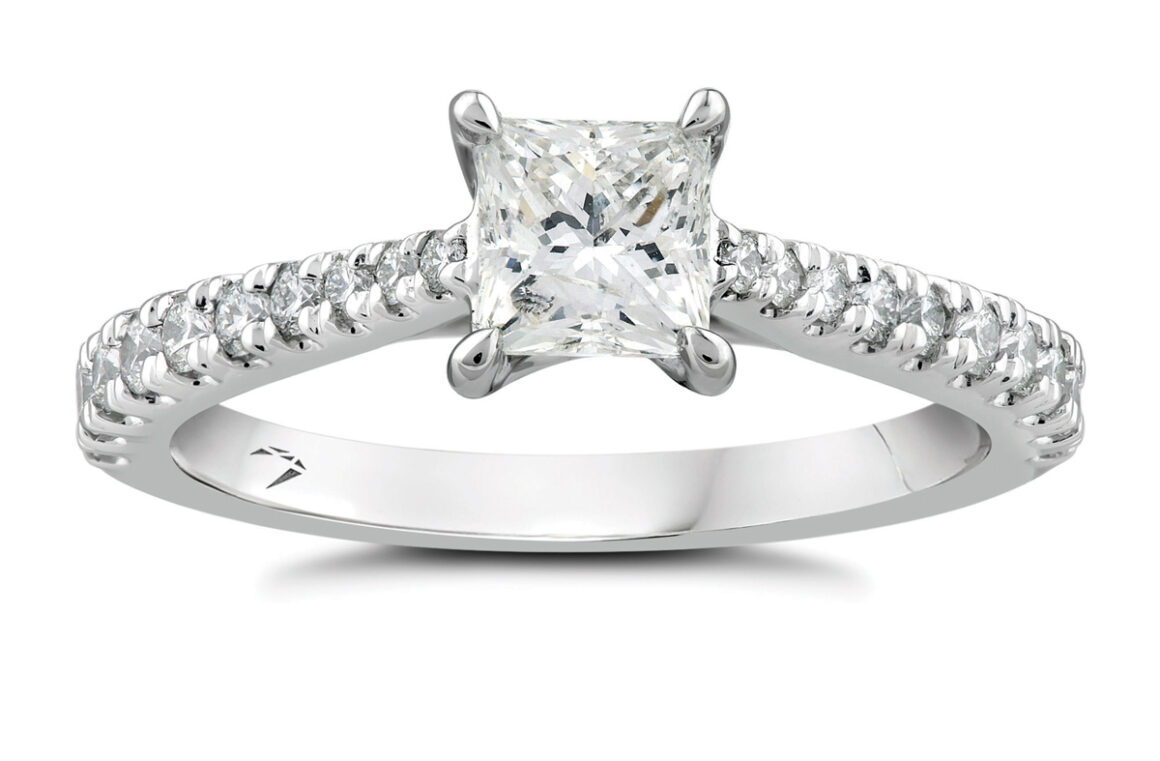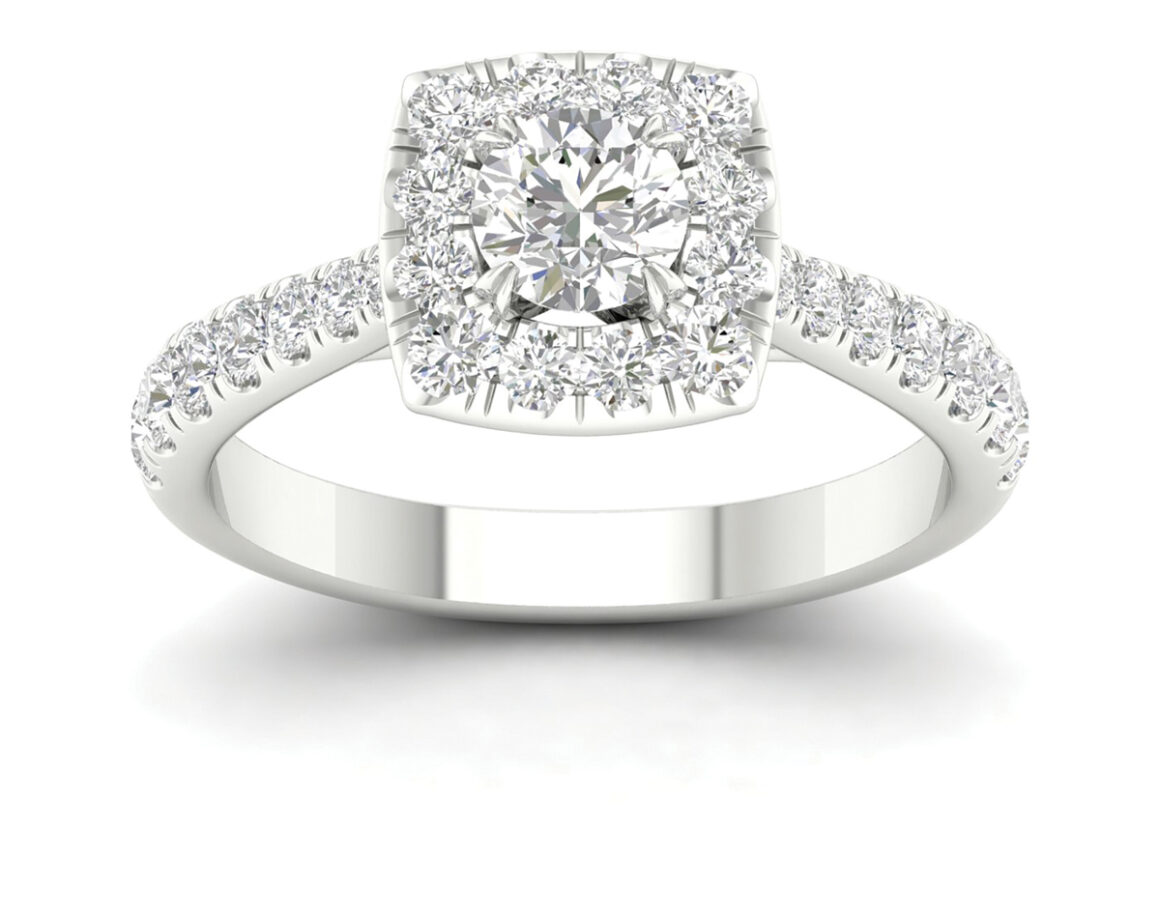The evolution of the engagement ring over the last 100 years
Nothing says, ‘I love you’ quite like diamonds. An engagement ring is more than just a piece of jewellery, it represents the bond between a couple; it celebrates your love story. Round. Princess. Pear. Oval. Emerald. Whichever is your favourite, diamonds really are forever – thanks to their ethereal beauty and never-ending sparkle. And with so many styles around; from timeless solitaires to more modern halo designs, the trends in engagement rings have evolved over the last ten decades.
Inspired by the shifts in popularity, the diamond and engagement experts at Ernest Jones dive into the evolution of the engagement ring, to analyse the styles and trends over the last 100 years.
1920s & 1930s – Emerald Cut
Emerald-cuts have an old-world sophistication. Classic with an edge, step-cut faceting makes them understated and elegant. Its flat top highlights the stone’s colour and clarity. The elongated, octagonal shape was a hallmark of the ‘20s and ‘30s, so they have a distinct Art Deco feel. Since then, the emerald-cut engagement ring has been worn by the likes of Elizabeth Taylor, Grace Kelly, Amal Clooney and Beyoncé Knowles-Carter.
Feeling inspired? Get the look with a Vera Wang 18ct White Gold 0.95ct Total Diamond Ring
1940s – The Round Brilliant Cut
Thanks to a certain ‘A Diamond is Forever’ campaign, the ‘40s were fixated on the classic round brilliant cut. Classic for a reason, a round brilliant diamond is perfect for a sophisticated look that will stand the test of time. The brilliant faceting is cut to optimise brilliance, with over 58 facets that reflect light and cast tiny rainbows in a breath-taking show of sparkle.
Feeling inspired? Get the look with a Eternal Diamond Platinum 0.50ct Four Claw Solitaire Ring
1950s – The Oval Cut
Taking the ‘50s by storm was the oval cut diamond. An elegant combination of the round brilliant and the marquise diamond, its shimmering facets make the light dance and create the illusion of longer fingers. Bold and sophisticated, the oval is a unique shape for the wearer who wants to express their individuality.
Feeling inspired? Get the look with a Diamond Story Platinum 0.50ct Total Diamond Oval Ring
1960s – The Pear Shape
Invented in the 1470s, the pear-shaped diamond became popular in the ‘60s thanks to the iconic Taylor Burton Cartier pear diamond. Shaped like a tear (of joy), the pear cut gives the finger an elongated look. It’s one of the least common engagement ring shapes, a blend of round and marquise makes this unique hybrid stand out. So, if you want a ring unlike everyone else the pear is for you. They’re also exceptionally beautiful in halo settings.
Feeling inspired? Get the look with a 18ct White Gold 1ct Total Diamond Pear Cut Halo Ring
1970s – Yellow Gold
Taking the ‘70s was bold abstract designs and stones, paving the way for the yellow gold engagement ring. Yellow gold engagement rings have a rich and warm appearance. The warm hue contrasts with a diamond, making it look more sparkly. At the time, yellow gold was seen as contemporary, 50 years on it has a more vintage feel.
Feeling inspired? Get the look with a Diamond Story 18ct Yellow Gold 1ct Total Diamond Ring
1980s – Precious Stones
The ‘80s introduced a new look to engagement rings, thanks to one famous proposal. Prince Charles proposed to Lady Di with one of the most iconic rings in history, a bright blue sapphire with 14 round cut diamonds surrounding the centre stone. The ring went on to be widely imitated throughout the era’s high society and precious stones became the go-to as they represented independence and individuality.
Feeling inspired? Get the look with a 18ct Gold Sapphire & 0.66ct Diamond Ring
1990s – The Marquise Shape
Engagement ring trends in the ‘90s indulged in minimalism and the ideology that less-is-more – specifically the marquise cut. The ultimate in elegance, its oval shape meets in pointed ends, resembling the hull of a ship. In addition to being unique, this cut is great for creating the illusion of elongated fingers.
Feeling inspired? Get the look with a Neil Lane 14ct White Gold 0.69ct Total Diamond Halo Ring
2000s – The Princess Cut
The ‘00s were all about the sparkle – and the more the better. Cue: The princess cut diamond. It’s square on the top, has four bevelled sides and comes in at a point (like an upside-down pyramid) beneath the surface of the ring. Beloved for its contemporary style (the clean lines keep the ring looking modern), the princess cut is the most popular fancy-shape diamond. If you’re looking for maximum sparkle in a new-age design, this is the diamond cut for you.
Feeling inspired? Get the look with a Arctic Light Platinum 1ct Total Diamond Princess Cut Ring
2010s – The Cushion Shape
A popular choice throughout the centuries, the cushion-cut really came into its own in the ‘10s. Putting a unique spin on the classic round brilliant, the curved corners and larger facets has more rainbow-coloured flashes of light than any other cut.
Feeling inspired? Get the look with a 18ct White Gold & Platinum 1ct Total Diamond Halo Ring
